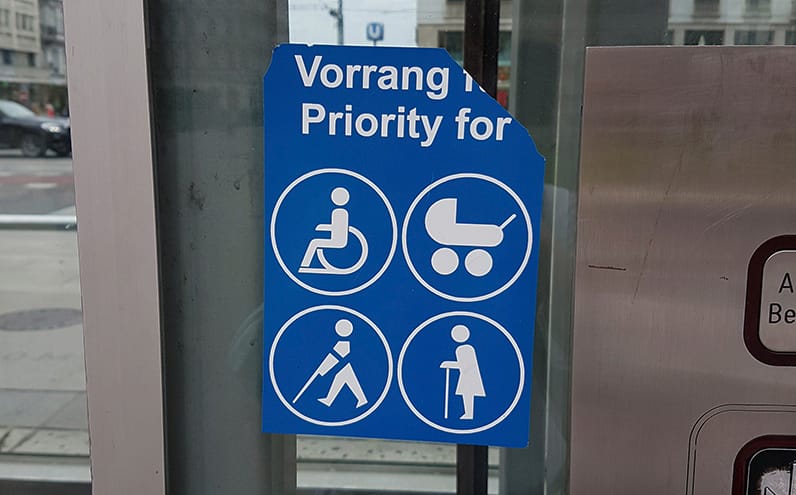
One might simply expect answers to these questions. Something like: “Read this book…, stick to this standard…, look at this example.”
Instead of a brief answer, we provide an in-depth introduction to the topic. This examination of accessible design can fundamentally change not only our understanding of design, but also our understanding of people with disabilities.
So here are 5 key things I learned about accessibility and design from the dmcgroup
1. You are not the user
To design a good product, it’s important to understand that it’s not about you. The needs of the users for whom the product is intended should be at the forefront. Your own preferences must therefore take a back seat in the design process. For this to be possible, you first have to realize that you may be completely different from the people in your target group. You have different experiences and different expectations and must not fall into the trap of designing what would be practical for you personally. It’s always about the user and what he or she needs from a product. For example, people with visual impairments often use voice output on the computer. To avoid comprehension problems when reading aloud, the page must be very well structured and pictures must have a meaningful alternative description.
As a sighted person designing a product, it is important to develop an awareness of such stumbling blocks.
2. Research is good, personal experience is better
Have you ever wondered what the morning routine of a person in a wheelchair looks like? If you try to put yourself in this situation, you quickly realize how many prejudices are floating around in your head and how little real knowledge you have. Of course, it can help to read up on the subject to gain a better insight.
However, a much more intensive examination of the subject matter is possible when you put yourself in unfamiliar situations and thus gain new experiences.
With this in mind, I set out to explore Vienna on barrier-free routes. I felt the real frustration that sometimes comes with it. An experience that I will certainly not forget in a hurry and a lasting learning experience.
Learn
more
Reach all users! Our agency focuses on inclusive design and accessibility. Work with us to create a digital experience that is accessible to every target group.
Start your journey to an accessible and diverse online presence now – together we can create digital accessibility for everyone!
3. Ask the real experts
Caution: Experts who specialize in one topic are not meant here. It’s about the people who lead a restricted life every day and therefore know best what could make their lives easier. A classic subject matter expert who specializes in a topic like accessibility is a good source, but nothing replaces the knowledge of actual users.
4. You learn faster in a group
Recognizing your own unreflected assumptions and prejudices and uncovering errors in thinking is difficult and almost impossible without outside help. Working in a team solves this problem. In a trusting environment, you can reflect honestly, ask important questions that may sometimes be embarrassing and benefit from the group’s knowledge. You show each other your blind spots and don’t feel stupid on your own if you’ve never thought about certain things. A team that works well together and the right communication tools will take you much further than you could get on your own.

5. The perfect inclusive world
There is no such thing as design that is accessible to everyone, and yet you have to design for as many people as possible. Especially in times when the internet has become such a central part of life, inclusion and accessibility cannot stop at the computer or smartphone.
It is difficult to do justice to all people, as there are many different types of restrictions. There are different types of wheelchairs, many degrees of visual impairment and very different characters who live with these limitations.
Nevertheless, we should try to master this impossible task in order to include as many people as possible in our digitalized society. Dealing with different needs and life contexts helps enormously to create products that can be used by most people. Finally, it should not be overlooked that every customer can also be a person with a disability that a company would like to reach.
Conclusion: Really understand accessibility
In summary, it can be said that accessibility is not just about memorizing standards and adhering to rigid rules. It is much more important to be aware of your own limited experience. Then you can reflect with curiosity, ask questions, observe and investigate, and in the end create a high-quality product.
Stay on the pulse of inclusion! Sign up for our newsletter and receive regular updates on the latest trends and best practices in accessibility.
Register now and make accessibility your strength!
Stay
tuned
More articles